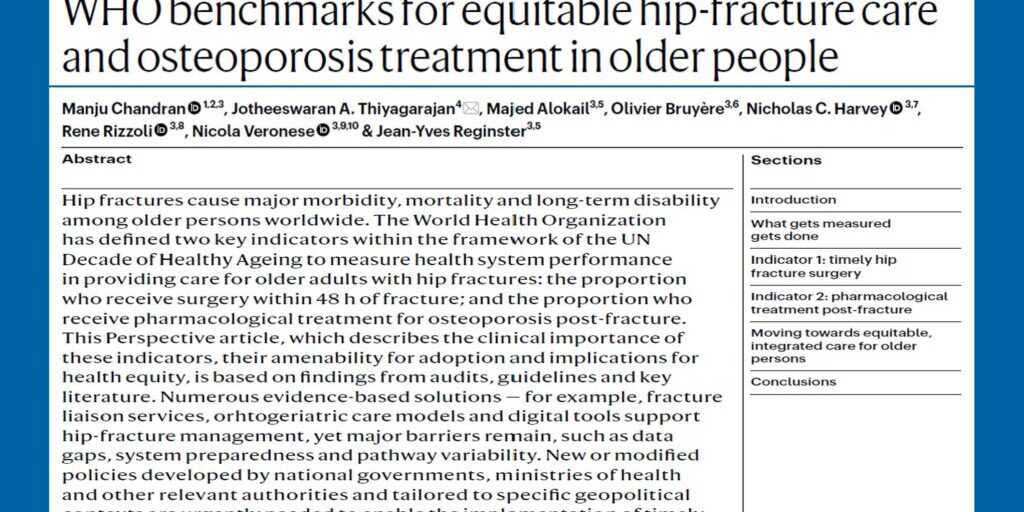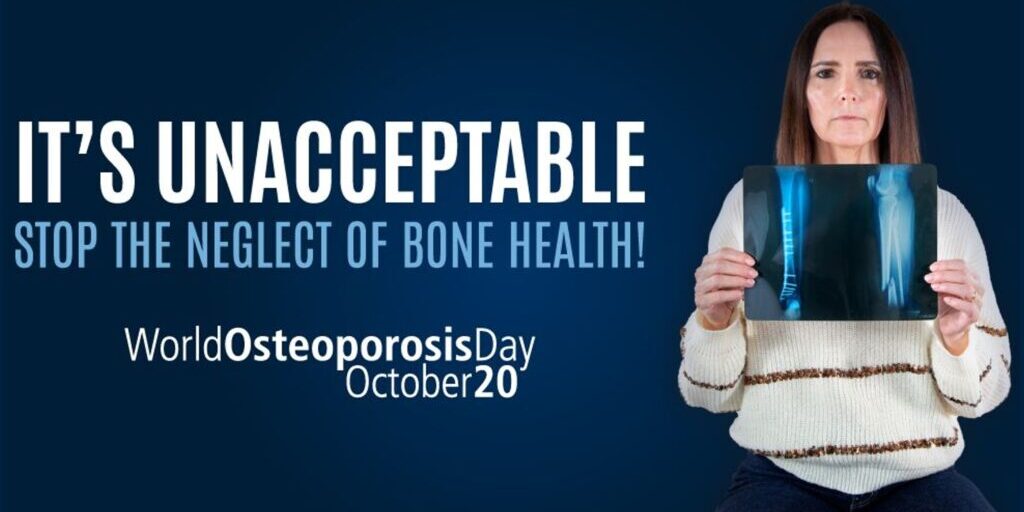In a previous blog, we discussed the implication of communicating mortality risk to patients with a fracture. In this article, we put forward the new concept of “skeletal age” to quantify the impact of fracture on mortality.
It is easy to determine the chronological age of an individual. The number of years that pass from the date of birth (elapsed time) is chronological age. However, for practical health purposes, the age of our body is more informative than our chronological age. In engineering, the idea of ‘effective age’ is used to assess the age of a structure based on its current condition rather than its chronological age.
In medical application, for the sake of illustration, we can start with the idea of ‘heart age’. We know that being overweight is a risk factor for cardiovascular mortality, and the heart age of an individual is determined by the presence of excess weight. For example, a 65-year old man may have a ‘heart age’ of 70 (according to this UK calculator), because the man has a body mass index of 26 kg/m2 which places him in the ‘overweight’ category. Knowing his heart age helps the man take preventive measures to mitigate his risk of cardiovascular mortality.
In the same way, the idea of ‘skeletal age‘ is quite relevant in osteoporosis. Skeletal age is defined as the age of our skeleton as a consequence of fracture or exposure to risk factors for fracture. Therefore, if an individual’s skeletal age is greater than their chronological age, then the individual has a higher risk of fracture.
It has been known for some time that fragility fracture is a risk factor for mortality. Women who have sustained a hip fracture have a 2.4-fold increase in mortality risk. We can translate this fracture-mortality relationship into skeletal age.
From 35 years of age, the annual mortality risk increases by an average of ~9.7% and 10.4% per year for men and women, respectively. The 10% annual increase in mortality risk is remarkably constant across populations around the world. More than 15 years ago, Brenner et al (1993) showed the number of years lost or gained in effective age for a risk factor is a simple function of the annual risk of mortality in the general population, and the hazard ratio of mortality associated with the risk factor ielog (hazard ratio) / log (increase in annual risk of mortality).
For example, a 60-year old woman who has just sustained a hip fracture has a hazard ratio of mortality of 2.4, which is equivalent to a loss of approximately 9 years of life. In other words, for the 60-year old woman, the hazard ratio of 2.4 corresponds with a skeletal age of ~69 years.
Moreover, men who have sustained a vertebral fracture have a 2.2-fold increase in mortality risk. This increased risk can be translated into a loss of 8.5 years of life. Therefore, a 70-year old man with a vertebral fracture would have a skeletal age of 78.5 years.
The concept of skeletal age can also be used to quantify the beneficial effect of a treatment. Among women who have sustained a hip fracture, zoledronic acid reduces their risk of mortality by 28%, the effect size for which is equivalent to a gain of approximately 3 years of life.
The following table shows the number of years of life gained or lost associated with a risk factor for mortality. Our unpublished data reveal osteoporosis is also associated with a 30% increase in the risk of mortality, and this is translated into a loss of 3 years of life. Consequently, a 65-year old man with a BMD T-score of less than -2.5 has a skeletal age of 68 years.
It is relevant at this point to distinguish between the terms bone age and skeletal age. Clinicians are familiar with the term bone age -an index of bone maturation during growth. On the other hand, skeletal age should be seen as an index of bone destruction and fragility.
In summary, the concept of fracture risk should be redefined to combine the risk that an individual will sustain a fracture, and the risk of mortality once a fracture has occurred. The idea of skeletal age proposed here can be used to convey the compound risk of fracture and mortality.
| Factor associated with mortality | Hazard ratio | Years of life gained or lost |
| Any initial fragility fracture
· women · men |
2.2 3.2 |
~8 years (loss) ~13 years (loss) |
| Hip fracture
· women · men |
2.4 3.5 |
~9 years (loss) 14 years (loss) |
| Osteoporosis (T-score ≤-2.5) | 1.3 | 3 years (loss) |
| Treatment with zoledronic acid | 0.72 | 3.3 years (gain) |
Concept proposed by APCO Executive Committee Member, Professor Tuan Nguyen, University of Technology Sydney, Australia






